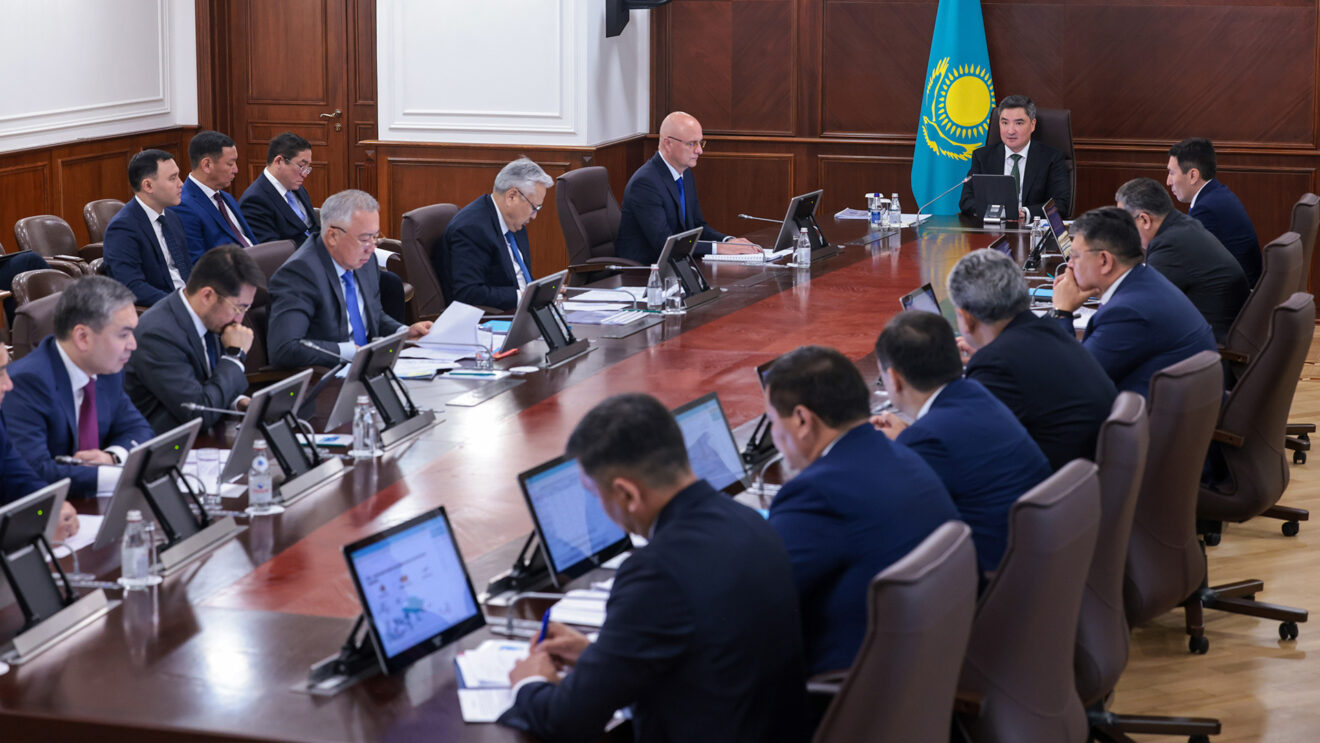ASTANA ( WNAM MONITORING ): Kazakhstan is undertaking a comprehensive modernization and digital transformation of its railway sector through infrastructure upgrades and the implementation of digital solutions to enhance efficiency, increase transit volumes, and strengthen its position as a key international logistics hub.
The meeting chaired by Prime Minister Olzhas Bektenov, Minister of Digital Development, Innovation and Aerospace Industry Zhaslan Madiyev and Transport Minister Nurlan Sauranbayev reported on the large-scale digital transformation of the railway industry.
Modernization of the railway network
Kazakhstan’s railway network, stretching over 16,000 kilometers, is the backbone of the country’s transport and transit system. With 57% of tracks worn, modernization is a strategic priority. By 2030, the Ministry of Transport plans to modernize 5,000 kilometers of tracks and repair 11,000 kilometers.
Currently, five major infrastructure projects are underway: Dostyk–Moiynty, Almaty Bypass, Darbaza–Maktaral, Moiynty–Kyzylzhar, and Bakhty–Ayagoz.
This year, two major projects are expected to be completed ahead of schedule: the Dostyk–Moiynty section and the Almaty Bypass line. In 2026, new lines Moiynty–Kyzylzhar and Darbaza–Maktaral will be commissioned, said Sauranbayev.
Large-scale modernization of 3,000 kilometers of sections has also begun, equivalent to building new tracks. For example, capacity on the Kyzylzhar–Sekseuil line will increase from eight to 25 trains, and on the Kandyagash–Tobol from seven to 25. Together, these projects are shaping a solid railway framework for Kazakhstan.
Transit growth and international corridors
Kazakhstan today positions itself as a major international transit hub, located on five global railway corridors. Transit volumes doubled over the past decade, reaching 27.4 million tons in 2024, and are expected to grow to 33 million tons this year and more than 54 million tons in 2026. By 2029, volumes are projected at 67 million tons, with international forecasts suggesting growth to 100 million tons by 2035.
To support this, Kazakhstan is expanding its terminal network. Currently, seven terminals operate – in Lianyungang, Xian, Dostyk, Khorgos, Kuryk, Aktau, and Almaty. Soon, new hubs will open in Selyatino and Svisloch, with five more planned. This will complete a transnational logistics chain along the East-West direction.
Kazakhstan offers a competitive transit product built on three pillars: delivery time, tariff, and service. On the Trans-Caspian International Transport Route (TITR), delivery times have been reduced from 53 to 17 days. Tariffs have remained stable for three years, ensuring predictability for business. The ministry is also preparing an intergovernmental agreement to develop the TITR, reinforcing Kazakhstan’s role in global logistics.
Five key areas of digitalization
According to Madiyev, the ministry is implementing five key areas: transitioning public services to a digital format, reengineering business processes, creating an innovation ecosystem, providing satellite internet for passengers, and introducing an online cargo tracking system.
In 2024, four government services in the sector were fully digitized, with more than 28,000 services delivered, 99% of them online. This year, a new safety certificate issuance service was added to the registry.
Reengineering and efficiency
Reengineering of the industry has addressed long-standing problems such as a lack of transparency in network congestion, manual planning, and paper-based control. Solutions include a digital twin of the mainline network, AI-based planning, wagon number recognition, GPS tracker integration, and automatic downtime calculation. These measures reduce process steps by 45% and business roles by 35%, ensuring greater transparency and efficiency.
Startups at Astana Hub are contributing with platforms for freight tracking, contract management, transport automation, and wagon fleet management. In 2024, their revenues exceeded 4.5 billion tenge (US$8.3 million) and more than 400 jobs were created.
A new transport automation platform has been introduced, which manages wagons, automates planning, and reduces empty runs by 10%, while increasing wagon turnover by 15%. Satellite internet has been tested on select passenger routes, and scaling is being considered.
New transit system to track cargo in real time
In transit, the ministry launched the transit information system within the Eurasian Economic Union (EAEU) framework. It allows real-time monitoring of cargo, ensures cybersecurity compliance, and is connected with EAEU member state systems. At the first stage, the system will cover up to 6% of cargo flows across Kazakhstan’s external borders, helping to prevent false transit schemes.
Locomotives and wagons
Kazakhstan operates 1,967 locomotives, with 456 new units to be purchased by 2029. The supply comes from domestic plants, as well as China’s CRRC.
The freight wagon fleet comprises 142,000 units, managed by over 300 operators, which cover the country’s needs. By 2029, operators plan to purchase more than 7,000 new wagons to sustain growth in freight transport.


